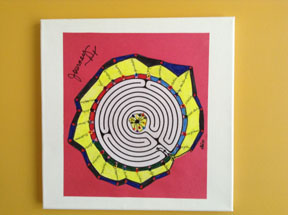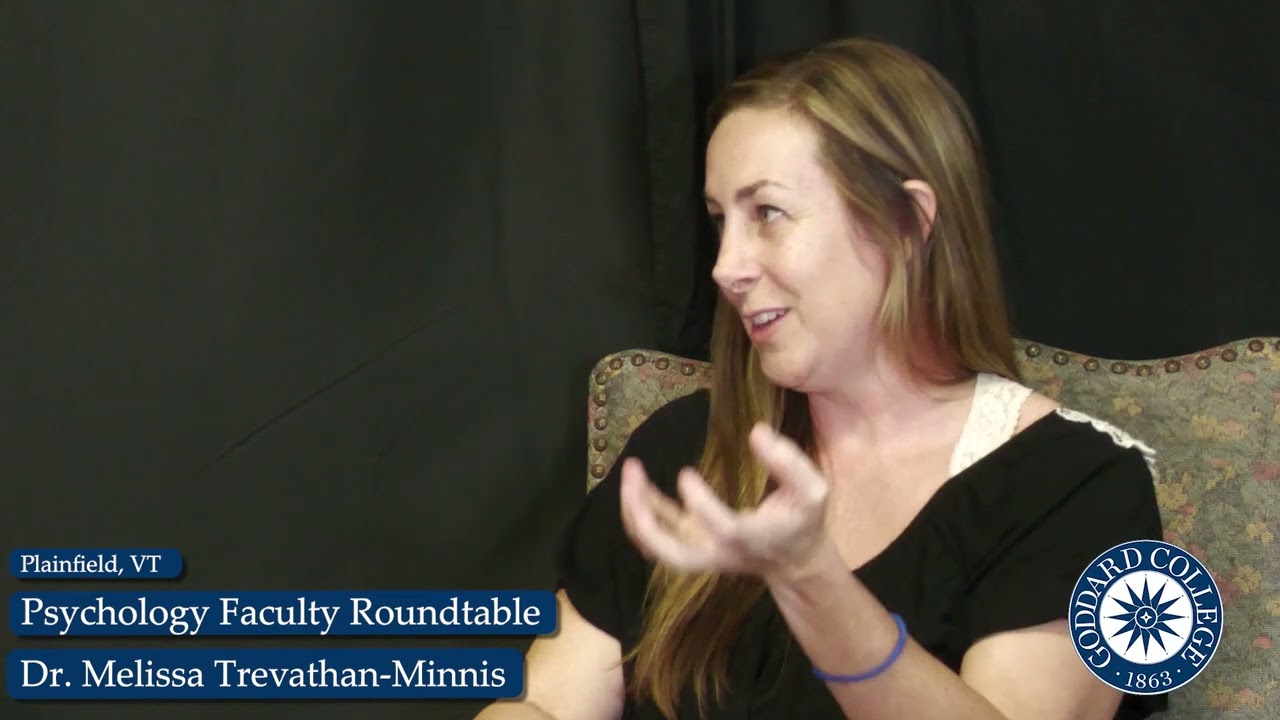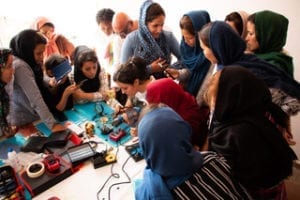Below, Sharon discusses the mandala she made as part of her course in Psychopathology in Goddard College’s Psychology and Counseling’s Expressive Arts Therapy Emphasis Program.

Artist Statement
For psychologist, Carl Jung, a mandala symbolizes “a safe refuge of inner reconciliation and wholeness” (Robertson, 1992). It is a fusion of distinctive elements in a unified scheme representing the basic nature of existence (Robertson, 1992). Jung used the mandala for his own personal growth and wrote about his many experiences utilizing mandalas in an attempt to connect with his inner-self.
Susanne F. Fincher, a Jungian-oriented psychotherapist, stated in her book, The MANDALA WORKBOOK: A Creative Guide for Self-Exploration, Balance, and Well-Being, that mandalas are not limited to physical representations, but can be created through movement. Mandalas according to Fincher can be walked, danced, visualized, drawn, sculpted, and build (Fincher, 2009). This piece represent my first experience working with the mandala as a centering tool, I agree with Fincher’s conclusion that mandalas are not limited but can be represented in many ways and forms. While I believe my piece is somewhat crude, for me it capture the uneasiness I was feeling and returned to me inner strength and positive energy.
This piece was inspired by a need to collect myself. A need to gather those things that I have held sacred, those things I will continue to hold sacred. We are all on our very own personal journey. I believe my journey has brought me on the verge of some “thing”, what this “thing” is I’m not sure. I believe a great transformation within me is about to occur. What this transformation is, I do not know as of yet. I felt a need to reflect on those things that I hold sacred. I believe those are the things that will accompany me on this journey of transformation. So, I started scribbling down what came to mind, when my scribbling finally came to an end, that which was gazing at me from the page was love, valuable, spirituality, joy, nature, action, deep contemplation, vitality, well-being, confidence, mystery, earth, life, wisdom, truth, happiness, meditation, courage, peace, endurance, sorrow, order, intuition, and maturity. Sitting there on the black and white page the words seemed lifeless and flat. As I ponder the lifelessness of my sacred words, it occurred to me that I could bring them to life with color, I could make them move and dance. Color was what my words needed, so I attached my words to their color meanings and my words leaped from the page to encircle me—words and color darting and flashing around and before me.
The more I reflected on this “thing” that was on the verge of happening, I became uneasy, my spirit became unsettled. I recalled walking a labyrinth a few years earlier and the calming effect it had on me, on my soul, on my spirit. Now this “thing”, this transformation, along with these words, with their many colors, the words I had brought life, was creating a disturbance of my inner self. As I reflected back to the time I spent journeying the labyrinth and the result it brought me, it occurred to me that just maybe the labyrinth could help me focus inward and gain peace. I placed the words and their colors around the labyrinth and as my eyes followed the path I meditated on each word on each color. My eyes took in the depths of the words and the richness of the color. Sometimes my eyes walked slowly, sometimes they walked fast, and sometimes my eyes would stop and gaze at a word and pull all its special meaning into my soul. Finally, after my many trips around the labyrinth I felt a calmness cascade over me. When I reached the center of the labyrinth for the last time, there I found all my scared words and their colors. As I stepped into the center they gathered in around me. I felt their essences permeating through me reassuring me that they would be with me whenever and wherever this “thing” became known.
Materials needed to complete this piece:
Basic Art Materials
Drawing pencil and eraser
Black marker
Black writing pen
Colored markers
Spray glue
Liquid glue
Ruler
Scissors
Xerox paper
9 in x 12 in Artist Marker Pad
Construction paper
Downloaded labyrinth stencil
Reference List
Fincher, S. (2009). The MANDALA WORKBOOK: A Creative Guide for Self-Exploration, Balance, and Well-Being. Boston: Shambhala Publications, Inc.
Robertson, R. (1992). Beginner’s Guide to JUNGIAN PSYCHOLOGY. York Beach: NICOLAS-HAYS.







